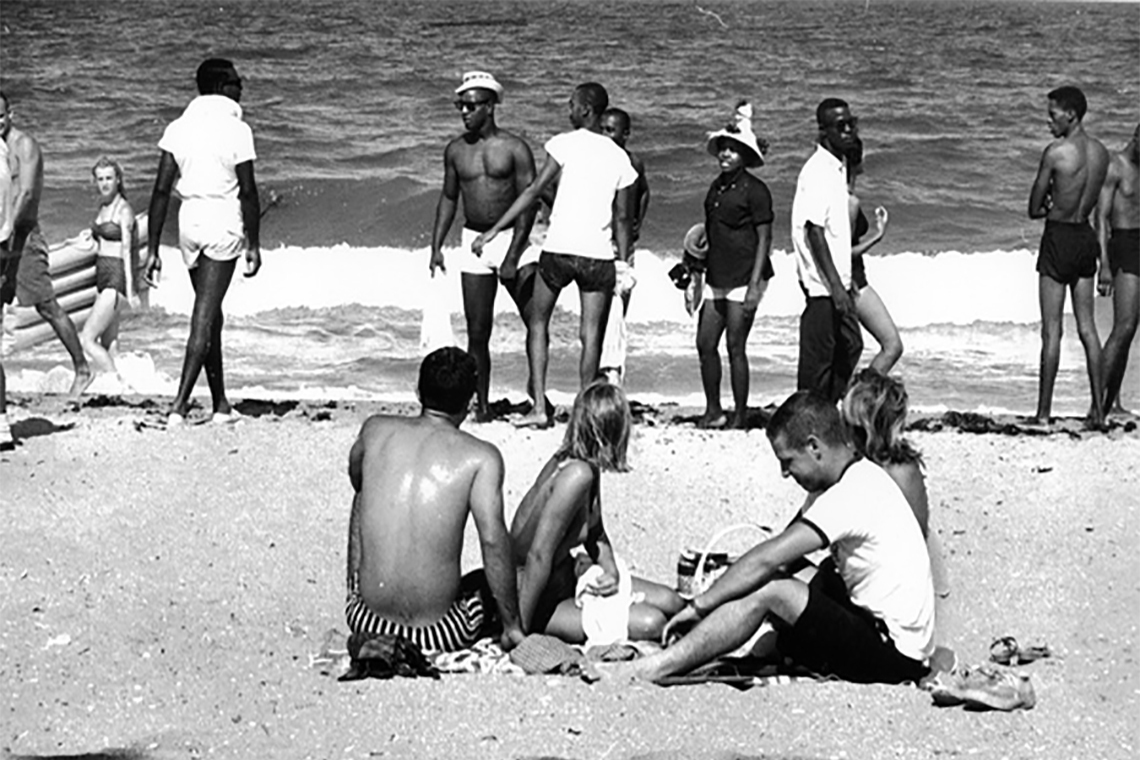It’s been 55 years since Eula Bandy Johnson led her courageous and now legendary civil rights march right here in our city. It was not to the statehouse, not for a bus seat, but straight to our segregated beaches off Las Olas Boulevard. Called by many “Fort Lauderdale’s Rosa Parks,” Johnson and her deeds are in every way deserving of such praise.
If her name sounds familiar, you may have read it on the bronze monument just across A1A from the Elbo Room. It commemorates that day – July 4, 1961 – when she, Dr. Von Mizell and a group of brave Dillard High students defied authorities and headed toward the water for a “wade-in.”
The whites in the water quickly left as the group of African-Americans approached on the sand. A bulletin came over the radio, “Negroes are lounging on the municipal beach of Fort Lauderdale!” Catcalls were aimed at Johnson and her waders.
But more serious threats came to the family of Eula Johnson as people began finding out her name.
“We received them every night,” Johnson’s grandson Gregory recalled in a 2012 interview with the South Florida Times. The haters knew where they lived and “could have bombed us at any time.” But they never did. “She was protected, it was God’s will.”
Blacks also feared for Johnson’s safety, Gregory Johnson said. They pleaded with her to “let it go.” He said that “they supported her, but were afraid for their own lives, the lives of their families, their jobs.’’ There were even attempts by whites to buy his grandmother off, he said. “[She] was promised that she would be allowed to shop in certain places, eat in certain restaurants, have access to clubs, use the front doors at some establishments if she gave up fighting for the n*****s and quit the Civil Rights Movement.”
Johnson’s response: “I’ll come in the front door when I can come in with my people.”
Who was this woman? Without a formal education, the mother of three, born on a Georgia farm, was nonetheless a savvy businesswoman. She owned a grocery store and two gas stations on Sistrunk Boulevard.
Her grandson says her motivation came from a visit to the welfare office. “The people there talked down to her so much that she walked out and never came back,” he said. “She then took every job she could — cooking, sewing, domestic — until she became an entrepreneur. She had a plan.’’
Johnson herself said, “I was grieved at the conditions the black people were living under. I have no desire to be militant but it comes a time when black people have to stand up and be counted.” So reports journalist Deborah Work, author of My Soul Is a Witness. Of course she was afraid, Johnson said, but she prayed to God to take away her fear.
The history of whites segregating Fort Lauderdale Beach goes back to 1927, according to Work’s account. She cites reporting in the Fort Lauderdale News of that year, a time when property near the beachfront was becoming precious, and growing numbers of blacks were coming to the beach from beyond Broward. City Manager B.J. Horne said, “People living along the ocean front object to Negroes using the ocean sands in front of their places.”
The goal became: “Get the Negro bathers concentrated in one spot” rather than have them “scattered up and down the beaches.”
That “black beach” spot eventually became an undeveloped area where the Galt Ocean Mile is today. When developers finally claimed that area, black bathers were unceremoniously shuffled to the other side of Fort Lauderdale Beach, across the Port Everglades inlet. For a long time it was an undeveloped barrier island mainly accessible by boats, creating additional hassles. Photographs from the time show small ferries manned by whites, full of black bathers.
So in 1961, along came Eula. After her wade-ins began, she was ruled a “city nuisance” for “creating chaos.” But because of threats from the KKK, she soon had FBI protection. A series of wade-ins made national headlines, and federal courts a year later struck down our city’s segregation ordinances. In this battle, as well as others – like her campaign to desegregate drive-in theaters – she was jailed, spat upon and endured racial epithets and threats.
But when she took that first bold step where Las Olas hits the ocean sands, everything changed.
Eula Johnson died in 2001 at the age of 94. In April 2016, it was announced that John U. Lloyd State Park would be renamed in honor of her and Dr. Mizell.












